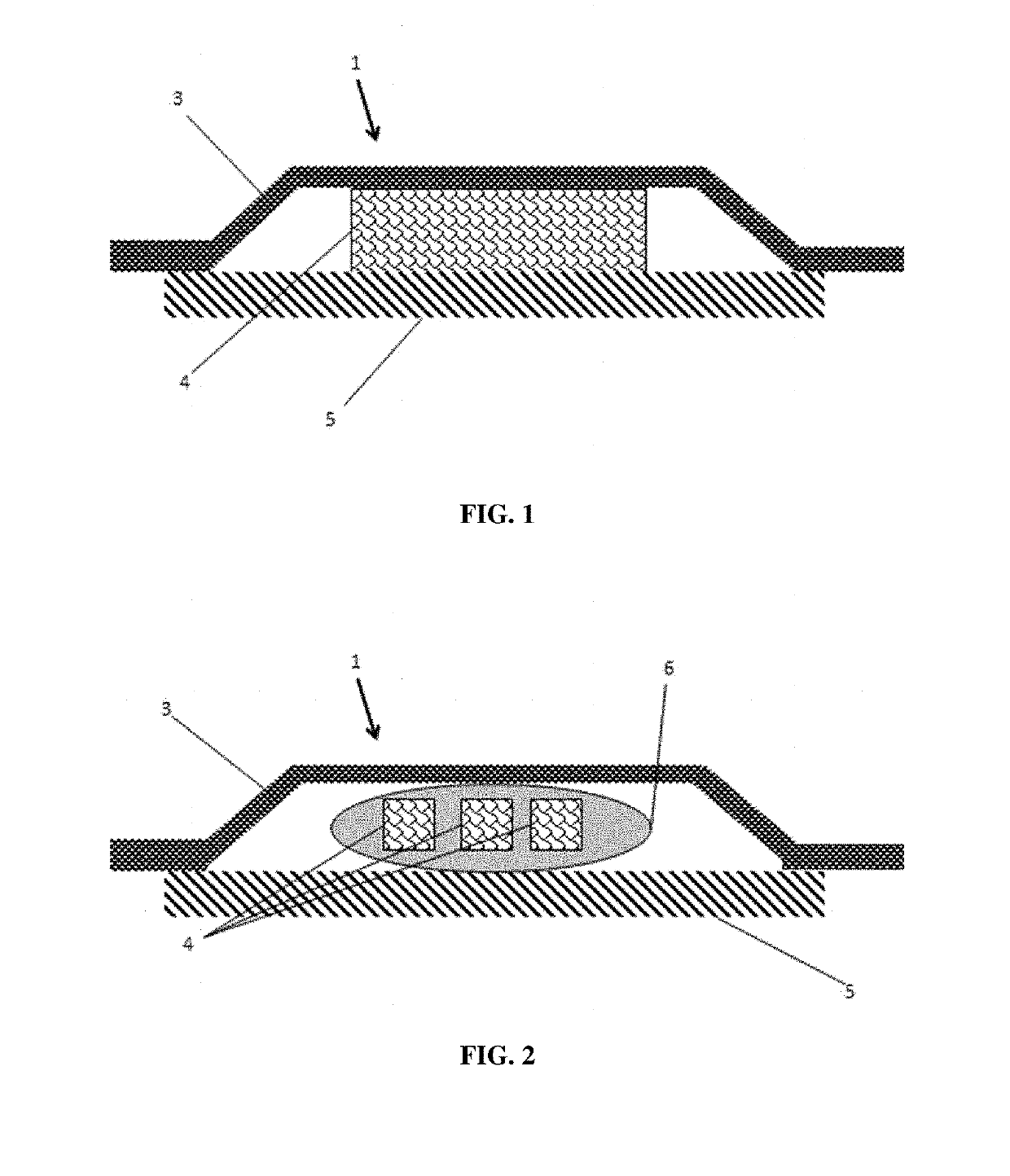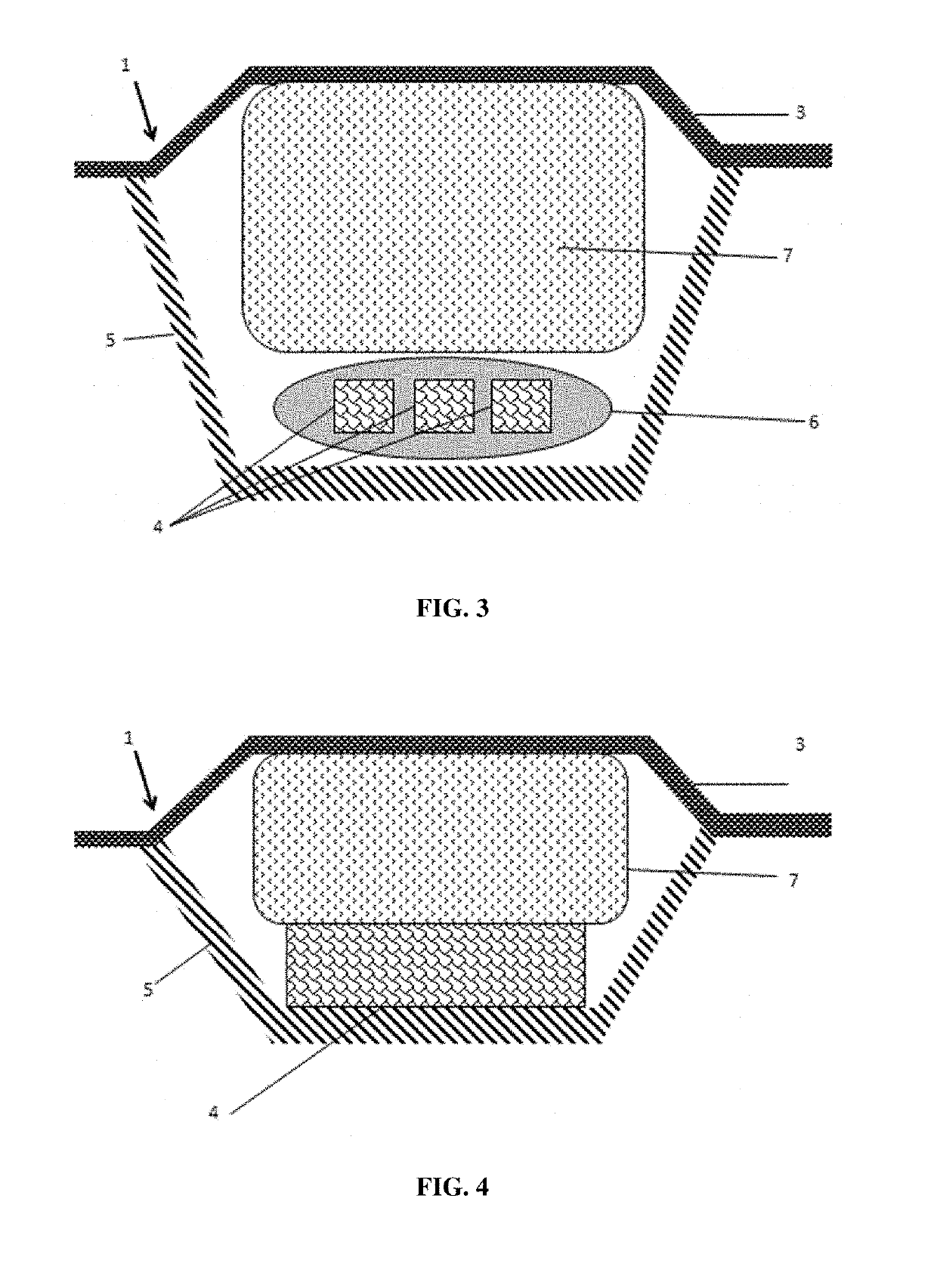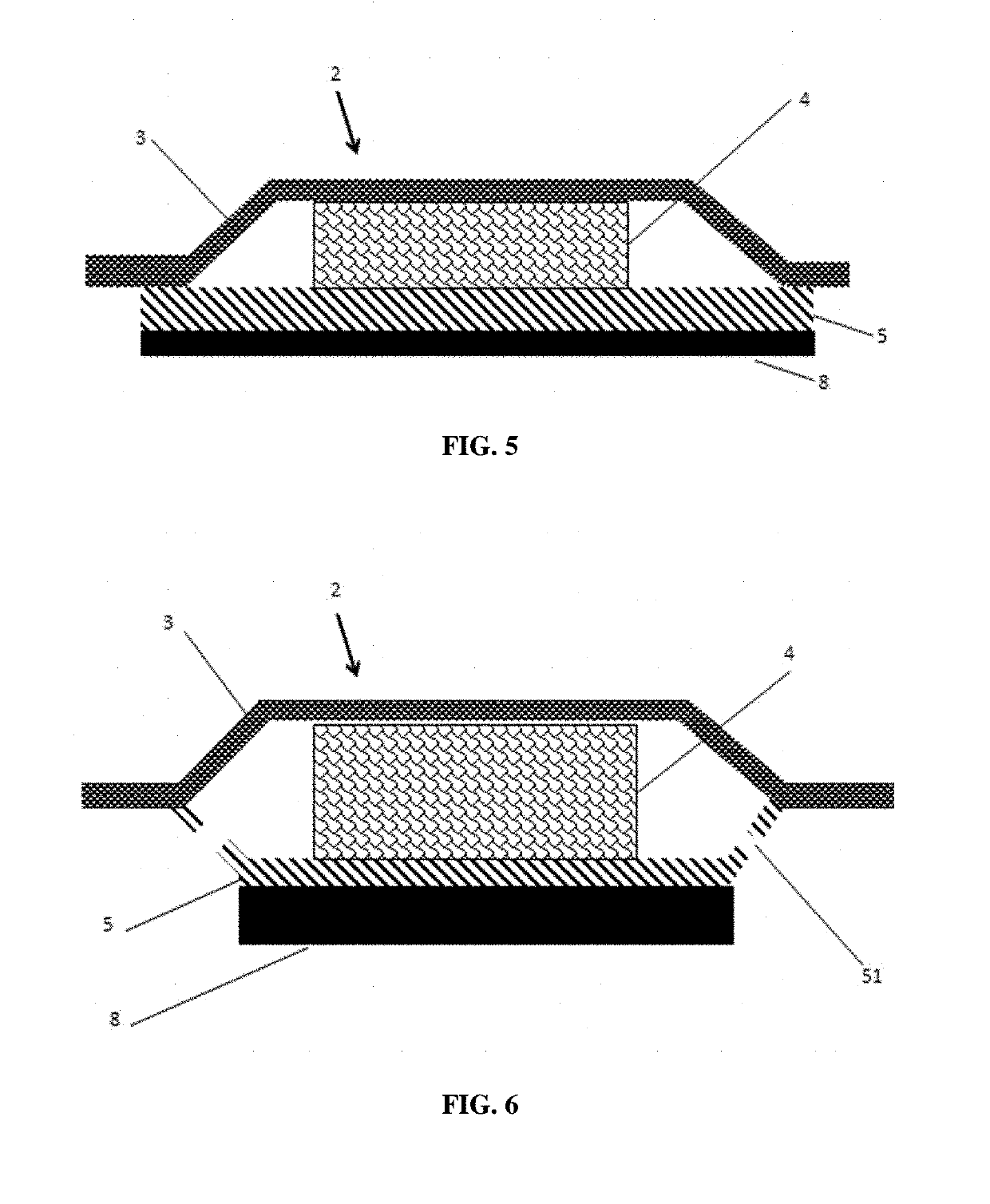Device for humidifying a textile electrode
a textile electrode and humidification technology, applied in the field of textile electrode humidification devices, can solve the problems of difficult detection of said signals with sufficient quality levels, complicated electrode handling of gels, and limited use of textile electrodes
- Summary
- Abstract
- Description
- Claims
- Application Information
AI Technical Summary
Benefits of technology
Problems solved by technology
Method used
Image
Examples
Embodiment Construction
[0044]The present invention relates to an electrode device comprising a humidification device. Said humidification device comprises a first layer, a second layer and a material capable of absorbing and retaining water. The material capable of absorbing and retaining water is located between the first layer and the second layer. The second layer is that intended to come into contact with the conductive area of a textile support, and the first layer is on the opposite side of the device. The second layer, in contact with the electrode, is impermeable to liquid water and permeable to water vapour from the material capable of absorbing and retaining water as far as the conductive area of the electrode.
[0045]The first layer is located, relative to the material capable of absorbing and retaining water, on the side opposite that intended to be connected to the conductive area of the textile support. The first layer is impermeable to liquid water and water vapour. Therefore, the material ca...
PUM
 Login to View More
Login to View More Abstract
Description
Claims
Application Information
 Login to View More
Login to View More - R&D
- Intellectual Property
- Life Sciences
- Materials
- Tech Scout
- Unparalleled Data Quality
- Higher Quality Content
- 60% Fewer Hallucinations
Browse by: Latest US Patents, China's latest patents, Technical Efficacy Thesaurus, Application Domain, Technology Topic, Popular Technical Reports.
© 2025 PatSnap. All rights reserved.Legal|Privacy policy|Modern Slavery Act Transparency Statement|Sitemap|About US| Contact US: help@patsnap.com



